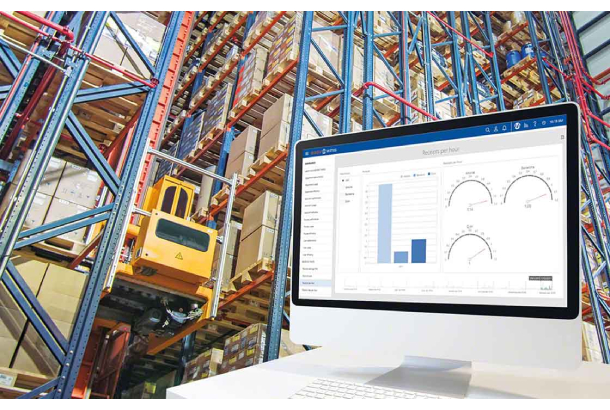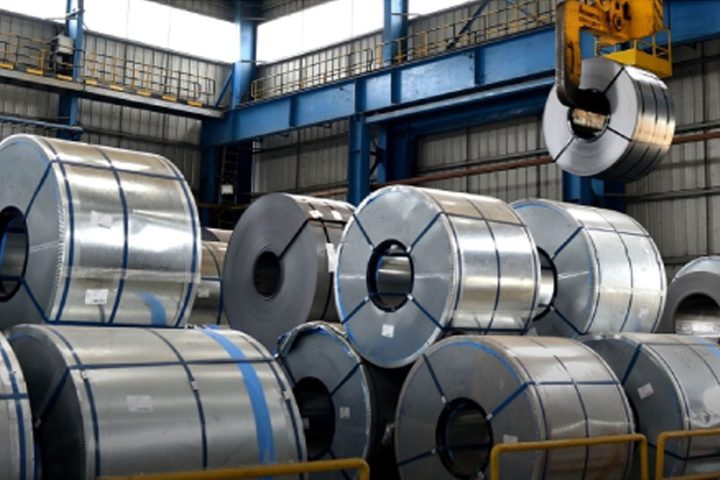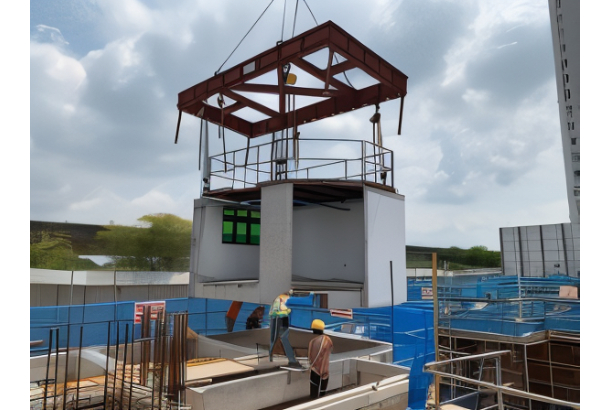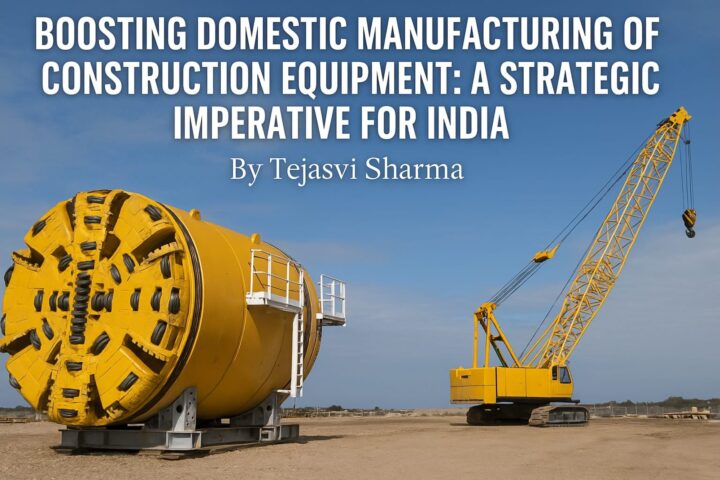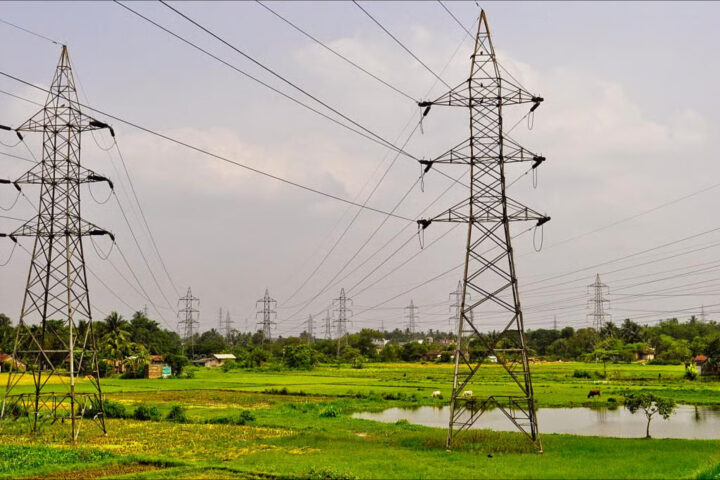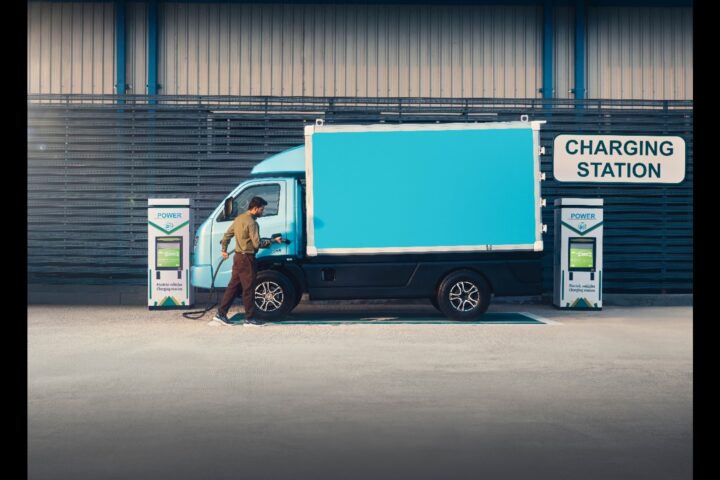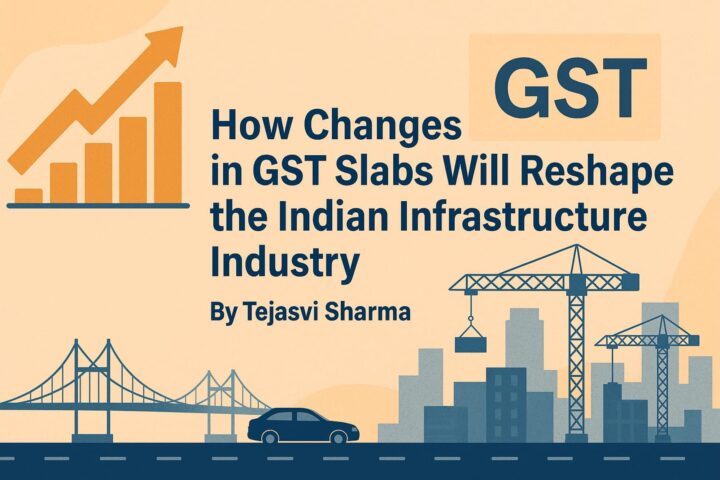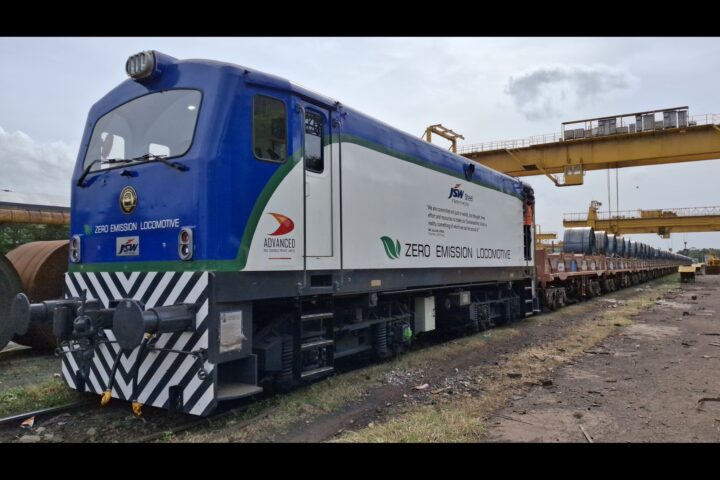A few sectors managed to duck Covid-19 and register growth. Warehousing sector is one such sector which not only ducked the Covid-19 wave but emerged stronger with investors queuing in with funds for further growth. Though there are few bottlenecks such as low adoption of technology, difficulty in land acquisition, unavailability of skilled manpower, the industry is making earnest efforts to overcome there challenges
The Pandemic struck. It was followed by total lockdown and later on by Unlock with versions 1.0, 2.0 and so on. During the lockdown and in the various stages of unlock, there was total shutdown followed by partial opening of industrial activities. This affected the growth of all most all the sectors, but the warehousing sector not only survived but registered an exponential growth in this Pandemic time. The reasons are obvious. Lockdown shifted the buyers’ preference from brick and motor stores which were totally closed during the period to click and buy. The products be it food, medicine or other essential were delivered at doorstep through e-commerce companies. This in turn gave impetus to warehousing sector in India. With shops and malls closed and buyers left with only option to buy through e-commerce sites, demand for products started to increase day by day. The e-commerce players felt the need for storage space to store the ever-increasing demands from buyers. With investors’ favourite real estate in doldrum, they were looking for an option to park their money. Now, with demand for warehouses from e-commerce players, it became the perfect opportunity for these investors to invest in existing and upcoming warehouses. “The sector has witnessed strong capital flows with institutional investors including the likes of CapitaLand Group, ESR, Indospace, Logos Group, amongst others developing warehouses across the major consumption centres,” says Rabin Bihani, Senior Analyst, India Ratings and Research. Avigna Group is planning to commission around 5 million sq ft of planned warehouse space by the first quarter of 2022. The company has a land bank of about 1,000 acres. Of this, around 500 acres have been earmarked for warehouse development in Chennai, Madurai, Coimbatore & Hosur in Tamil Nadu, Hoskote in Karnataka,Nellore near Krishnapatnam port in Andhra Pradesh. “In addition to this, we are aggressively looking at a PAN Indiawith footprints in Bhiwandi in Mumbai, Farruknagar in Haryana, Jaipur and Kolkata.Avigna Group is also coming up with a first of its kind Food Terminal Market near Chennai which is designed to forever change the traditional concept of a mandi and will revolutionize the way farmers buy and sell their farm produce,” says Abhijit Verma, Executive Director & CEO, Avigna Group.
This brought windfall investments for the warehousing sector. As per ANAROCK Research, despite Covid-19, more than USD 6.27 billion was pumped into Indian real estate in FY21 as against USD 5.8 bn in FY20, up by 19% in a year. “Interestingly, unlike earlier, private equity investors in FY21 largely focused on portfolio deals spread across multiple cities and assets rather than investing in a specific project or a city. Such portfolio deals constituted 73% of the overall share with approximately USD 4,583 million invested across multiple cities deals via portfolio deals. Warehousing was part of these portfolio deals. However, if we look back, nearly USD 7 bn worth platforms have been created for the warehousing sector between 2015 to 2020. Add to it, over USD 2 Bn PE investments have been infused in the Industrial and Logistics sector between 2017 to Q1 2020. Investors are upbeat on the growth of warehousing in India and are presently working closely with developers to identify and invest in the sector,” says Pratyush Pandey, President – WIL (Warehousing, Industrial & Logistics), ANAROCK Group.
According to a report by JLL, the flurry of investments in warehousing helped attract $1.36 billion to India's commercial real estate during Q2 2021, making it the most active second quarter in the last five years. Of the total, warehousing accounted for 55%, followed by 20% in retail, 17% in office and 85 in residential. Investments in April-June 2021 are the highest received by the segment in any quarter of a calendar year since 2005, which is mainly attributable to the $700 million Blackstone deal. In May, Blackstone announced acquisition of Embassy Industrial Parks, a JV of Warburg Pincus and Embassy that controls 22 million sq ft of Grade-A warehousing in major industrial hubs including Bangalore and Delhi.
Warehousing sector in pre-Covid
The real estate sector was in a sluggish phase. The reforms brought in by the government for transparency in real estate sector made the investors to look for greener pasture other than investing in real estate. Demonitisation further hurried investors search for greener avenues to park their money. In this interim period, the government introduced GST. Introduction of GST brought in windfall for the warehousing and logistics sector. “Warehousing sector has witnessed a positive growth momentum over the last 4 years. Implementation of GST in 2017 paved the way for development of Grade A warehouses across the major cities of India,” says Rabin Bihani. According to a report, the sector grew from 35 million sq ft (MSF) during 2015-17 to 77 MSF over 2018-20. And according to a then survey by CBRE Research, the implementation of the GST as well as the advent of tech has boosted logistics demand, particularly that for quality space. Occupiers across segments are now opting for large, modern warehouses. This is evident from the fact that annual space take-up in this segment has grown by more than 50% y-o-y in both 2017 and in 2018; and is currently close to 25 million sq ft. The report concluded with ana expectation that this trend with continue, with annual leasing likely to touch 25-30 million sq ft by the end of 2019 and cross the 30 mn sq ft mark in 2020 and post 2020. And now, in a recently release report “India's Industrial & Warehousing Sector: Tenacious Amidst the Turning Tide” by CBRE South Asia, states that the current warehousespace take-up over the past five years has crossed 100 million sq ft cumulatively, with a historic leasing peak of 32 million sq ft reached in 2019. 3PL players accounted for more than 40% of the total warehouse leasing in the post-GST period (2018-20), followed by occupiers from the e-commerce (21%) and engineering and manufacturing (11%) sectors. Occupiers across these sectors have started to increasingly prefer large-sized spaces to consolidate operations, especially post the implementation of the GST. Backed by increasing online retail demand amidst the pandemic, e-commerce and 3PL players are further expected to lead warehouse leasing over the next few years.
Shifting preferences and cities
There is a visible shift in preference from Tier I to Tier II and Tier III cities. In fact, analysts predict that there is going to Grade A warehouses in Tier IV and Tier V cities as increase in penetration of internet has resulted in a chunk of the traffic for e-commerce ‘click and buy’ coming from these cities. “In recent years the demand for e-commerce has gradually increased in the Tier 2 and Tier 3 cities due to rapid internet penetration and increase in consumer spending. Tier 2 and 3 cities accounted for a 90% YoY incremental volume and value growth in the e-commerce market in the last quarter of 2020. We expect demand for Grade A warehousing facilities to further increase in Tier 2 and Tier 3 cities as more than 60% e-commerce transactions in India are witnessed in these towns,” says Ramesh Nair, CEO, India & Managing Director, Market Development, Asia at Colliers.
As per the “India Real Estate Outlook – A new growth cycle” by JLL, Tier II & III cities are gaining strength in warehousing is eminent from the changing pattern of a typical warehouse sizes with some large transaction sizes of 0.3 – 0.4 million sq ft, even in cities such as Coimbatore and Lucknow as outliers and ranging between 0.1 – 0.2 million sq ft in general, as compared to 0.025 – 0.05 million sq ft (25,000 – 50,000 sq ft) a few years back. Scale also brings sophistication (economics of scale) and therefore we have seen pick up in higher infrastructure organised spaces even in Tier II cities. JLL research indicates that warehousing sizes is expected to grow. The report further states despite unfavourable socio-economic environment, warehousing stock in top 8 cities, which includes, NCR Delhi, Mumbai, Bangalore, Chennai, Pune, Kolkata, Hyderabad and Ahmedabad has added 27 million sq ft to reach a total of 238 million sq ft in 2020.
Leasing takes centre stage
According to a report by CBRE South Asia, leasing of warehousing spaces is expected to touch nearly 100 million sq ft by 2023 after witnessing a historic peak of 32 million sq ft in 2019 as India is emerging as a preferred investment destination for global manufacturers – especially those deploying a ‘China plus One’ strategy for diversifying their supply chains.“The warehousing market has shown resilience throughout the pandemic, at a time when demand in hospitality, retail and office sectors got impacted. Leasing of industrial and warehousing spaces in five major cities rose 31 per cent during H1 2021. During this period, 15.1 million sq ft new supply was added across top 5 cities in India, with gross absorption of about 10.1 million sq ft.58% of the total leasing in H1 2021 was for Grade A warehousing facilities indicating increased inclination for superior quality and compliance standards. Hence looking forward, the demand for warehouses with upgraded technology and building specifications is likely to increase,” says Ramesh Nair.
However, the ongoing Pandemic and increasing building material costs are denting the growth of warehousing sector. “Yes, the increased price of building materials is definitely going to affect the growth of the warehousing sector. This will directly impact the rentals. Prices of cement and steel have gone up by 30-40% resulting in cost implications affecting the profit margins.Third-party vendors will not be able to honour the fixed-price contract unless the developers make the payment for the entire consignment in advance which is now done stagewise. The fixed-priced contract is again likely to work out only with the large developers, small and mid-sized developers will not be in a position to pay the entire amount beforehand. This is a vicious cycle, all stakeholders need to work together to find a solution,” says Abhijit Verma. The impact is clearly visible. According to Knight Frank India, the warehouse leasing market has declined by 23 percent. “In FY 2021, the warehousing transactions in the top 8 Indian cities registered a decline of 23 per cent year-on-year to 31.7 million sq ft. This decline can be attributed to the disruption caused by the pandemic and the associated lockdowns that brought economic activity to a near halt and adversely impacted occupier decisions.”Not only increasing building material cost, but the sector’s growth is further stunted by unavailability of labourers, fund crunch and limited technologies adaptation. “The warehousing sector witnessed substantial leasing growth in the past year due to robust demand from leading e-commerce players, followed by FMCG and cold storage companies. However, challenges such as limited availability of debt, increased material cost, lack of availability of labour, inconsistent supply of construction materials slowed down construction progress. The second wave has further decelerated construction activities and delayed leasing closures. The slowdown in construction would lead to an incremental increase in demand for ready buildings at strategic locations from domestic and international companies wanting to set up or expand their operations. ESR has developed a substantial portfolio of ready assets across the country to address this demand,” says Abhijit Malkani, CEO, ESR Advisers India.
An update: Technology and skill development
For any industry to develop technology has to be upgraded continuously with changing market dynamics. Currently, the warehousing sector is slow in technology adaptation. “Warehouses should be upgraded to incorporate artificial intelligence and the Internet of Things (IoT) to increase their efficiency and functioning. Technologies like warehouse management systems (WMS) help in optimising and managing the inventory, locating parcels, and picking up the right kind of packaging, while Transportation Management System (TMS) should enable safer, efficient supply chain management. Over the next few years, we expect greater amalgamation of technologies such as, Real Time Locating Systems, radio frequency identification (RFID), automation and robotics that is essential for a wide range of automated real time data management. This should enable companies to efficiently coordinate inventory management, handling, and faster delivery. These technologies also allow suppliers to cater to consumers requirements in a more cost-effective and time-efficient manner whilemaintaining the safety standards, avoiding inventory damage and creating transparency,” says Ramesh Nair.
Abhijit Verma opines that technology advancement will revolutionize the warehousing market and will help in creating employment opportunities for skilled labour. “The technological advancement is only going to revolutionize the warehousing market in the years to come. It is even creating employment opportunities for skilled labour, such as AI experts and engineers, creating white collar as well as blue collar jobs.The supply chain management can be seen becoming more intact nationally as well as globally. Better communication and accuracy, improved customer service and higher satisfaction, optimized routes and more safety for drivers are some of the other changes that the sector is witnessing as a result of such emerging technologies,” says Abhijit Verma.
In the past few years, the warehousing sector has grown exponentially with Grade A warehouses in most of the prominent tier I cities. This has brough in shortage of skilled manpower. “The warehousing sector is still at a nascent stage in India and one of the major challenges is skilled manpower,” says Abhijit Verma. He further explains how skill can be nurtured for warehousing sector. “We can nurture the required manpower by creating robust training and skill development programs. It is important that Indian institutes and colleges incorporate courses on warehousing and allied sectors. Most importantly, we have to educate the young talents that warehousing is a sunrise sector and can provide ample of attractive career opportunities for both blue-collar and white-collar divisions. Whether it's managers, admins, and operation executives with leadership skills or technologically advanced roles such as Automation Engineer, Data Engineer, and AI Technicians, there is now a greater demand for skilled professionals in this sector,” says Abhijit Verma
Overcoming challenges and government initiatives
Land acquisition remains the prime concern. The industry is looking for a single window clearance. “One of the most difficult challenges faced by the warehousing sector is unavailability of feasible land parcels, and the cumbersome process of land acquisition.Lack of seamless electricity and power is also another challenge. Although the Indian warehousing sector has improved since past few years, it is still in a nascent stage with many facilities managed by unorganised and local players. This sector needs organised players in the market to attract investors and improve quality,” says Ramesh Nair.
“Land regulations are another crucial area that Government should look into. In fact, the Government has started working on this, so we can say Government is absolutely in the right direction.However, collaborating with the Government and working on a PPP model would accelerate the growth,” says Abhijit Verma. The warehouse industry seems satisfied with the government initiatives. They hope these initiatives will help in the growth of warehousing sector. “The current government’s incessant focus on building and developing a sound infrastructure definitely bodes well for the warehousing sector. Additionally due to its efforts, total approvals needed to set up a warehouse in the country has been reduced from 33 in 2015 to 15 as on 2019-end. Likewise, the time taken to construct a warehouse has been brought down to 3.5 months from the previous 6 months during the same period. Meanwhile, India’s high logistics cost – at 14% of its GDP – is still better than China’s 15%,” says Pratyush Pandey.
“Already PM’s mandate for Atmanirbhar India and GST implementation helped the sector grow in a big way. In the last couple of years, the Government has taken many initiatives and their focus on this sector has become very evident,” says Abhijit Verma.
Already a sunrise industry
The country will take a year or two to totally recover from the Pandemic. By then, ‘click and buy’ e-commerce site is not only going to flourish but will make a deep in roads in the buying preference, which in turn will give a huge demand to warehouses in India. The industry and the government are showing their willingness to overcome challenges faced by warehouse sector such as faster technology adaptation, skill development, land acquisition. The government has lined up slews of infrastructure projects which are going to further increase demand for warehouses. Investors too are keen to invest in India’s growing warehousing sector. Except a few bottlenecks to overcome, the industry growing phase will surge further in the coming years.


